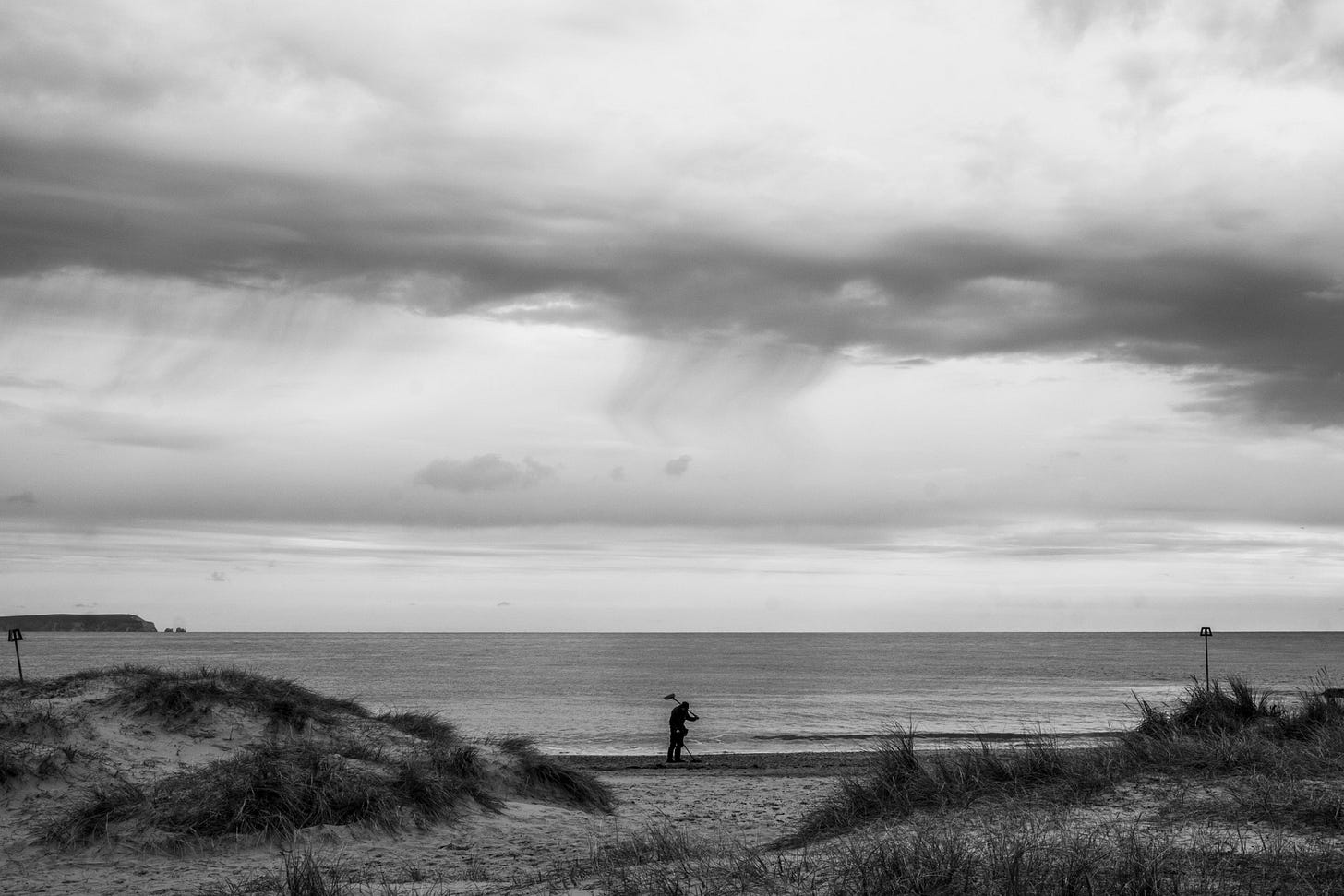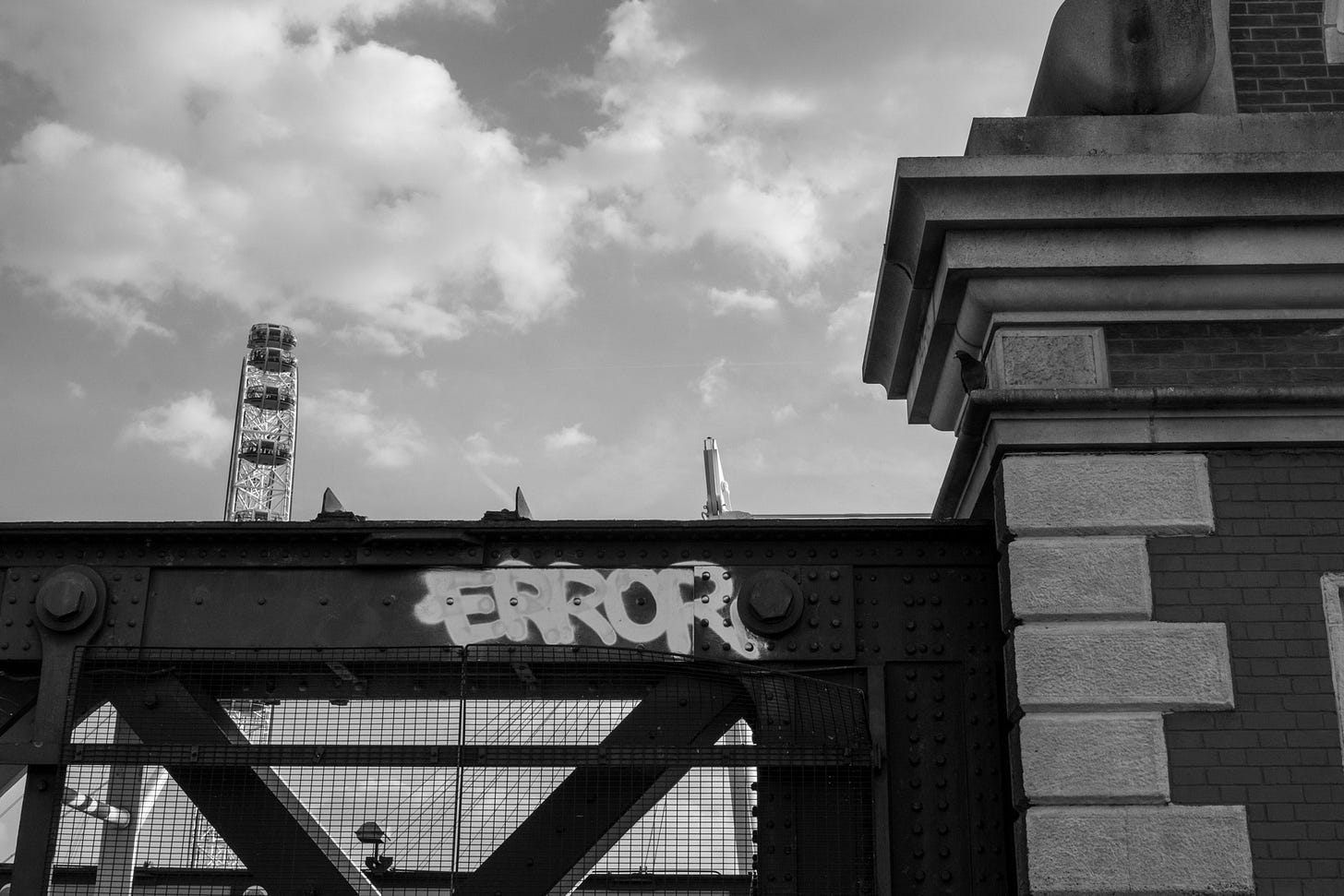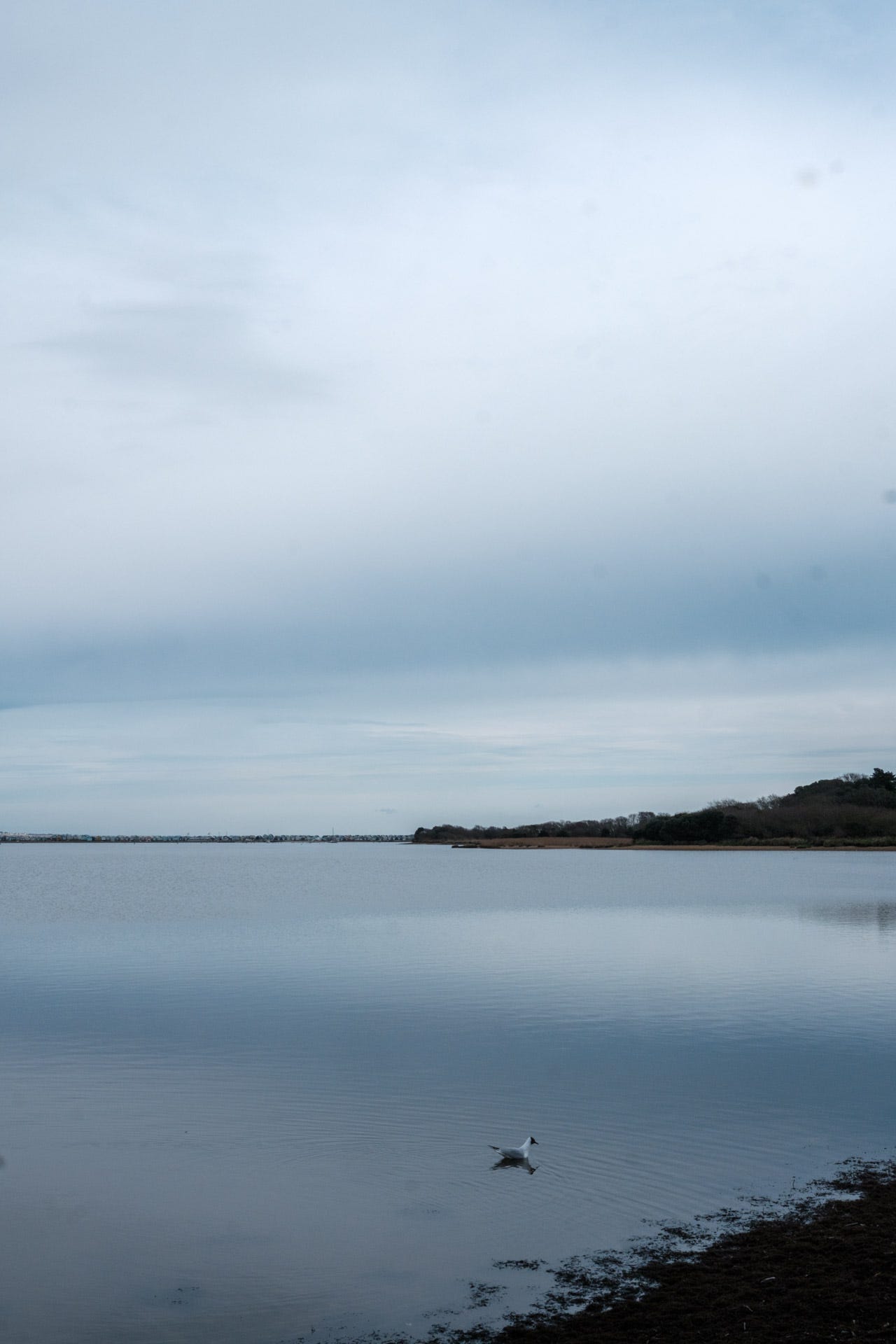Five approaches to take useless pictures
Starting with instincts and a blank canvas, we should try to avoid judging what we can't describe.
Sometimes creating images does just not make sense, particularly when we try to describe them or identify their value. Recently I’ve been reviewing the last year or more of photos to find some images that passed me by the first time, and have struggled to express why I like them.
Even the photos we like – quite often the ones we like the most – are difficult to explain. This is in part of course because a visual medium like photography confounds verbal or written description, in the same way you can’t really convey in words how music sounds. Someone once said (it’s disputed) “Writing about music is like dancing about architecture.” although I do quite like the idea – mezzanine macarena anyone?
It is also because what we bring with us affects our judgement. Our values, cultural references, visual literacy, even mood, can make us read a scene and the image that comes after very differently. The moment itself can distort how we approach something. It took me years to really understand how to block out things happening outside the frame. The noises, smells, bustles of activity or lack of it cannot be seen in the image, but can easily influence it.
The enemy within / the space without
If you are aware of all these distractions, which we often ‘focus’ to block out, the flip side is the tendency to look for ‘good pictures’, the ones we can explain, the composition we’ve been taught or learned, the subjects we know are photogenic. This is just as bad! Not because it generates poor pictures, but because it creates good ones which have an initial satisfaction, but suffers on longer inspection.
I think that’s why I passed by many of these pictures the first time, looking with a publisher’s eye not an artist’s. Trying to tick a mental box with each one. I’m not saying they are great (I’m not sure they are), but I think they are interesting. The selection also focuses on absence rather than presence, space rather than content.
Let’s use some of the images I found to explore how you can focus on getting ‘useless images ‘that might prove interesting later.
1. Edge of Frame
Try to stretch your tolerance for where elements of the image should go. Golden Triangle? Squash it. Rule of Thirds? Ignore it. Let’s make the viewer work for their supper, and find a connection they can barely even see in one glace.
2. Far far away
We would all love our subjects to come a little bit closer, but sometimes, like Donald Trump, they are much better far, far away, preferably in another jurisdiction. Is that a person? Is it a fly? Is it a mark on the camera lens?
3. Messy is good
We live in a messy world. Whilst I do think an image maker’s job is to distill this world into a simpler, focused moment, sometimes it’s good to embrace the mess and rough edges. Pause and make an image of the mess you find. It’s a bit like recycling (not much).
4. Drawing a blank
You want content? Don’t bother. Sometimes the lack of something is much more thought provoking, even if it does seem like you haven’t really made an effort (you have, it just looks that way). Below a picture of a seagull on a grey day.
5. People, who needs ‘em
It’s tempting to wait until someone turns up to make an image meaningful and give it context, a reference point or even scale! Don’t worry about that bit, the chances are there are plenty of clues in an image without actual humans.
Next week – how to make camera lenses from old jars (only kidding).
Inflection project update!
If you’ve been following this ‘stack, and a worryingly high number of you are, you will know that this year I’m collaborating with
on ‘Inflection’, where we take turns creating images and art in response to one another in an unfolding series. I started (see this post) and Karen has now responded with her triple artwork. This is escalating rather fast, and I’m hoping I don’t have to do 9 images in response! Now it’s becoming a series, so I’m going to have to think a bit harder about this one and how it continues, or starts, a narrative we can keep developing. Wish me luck.Coming soon on Creative Explorer
(in no particular order):
The importance of the edit (aka Lies, damn lies, and photoshop)
On the road – travelling images / images when travelling
Should we care about AI and photography?
Any more suggestions please send them on a postcard to the usual address
Thanks everyone, and in particular any and all of my new subscribers and followers who have managed to read this far down the post – you are most welcome.










An insightful post that is a welcome reprieve from the orthodox rules.
Great post and spot on.